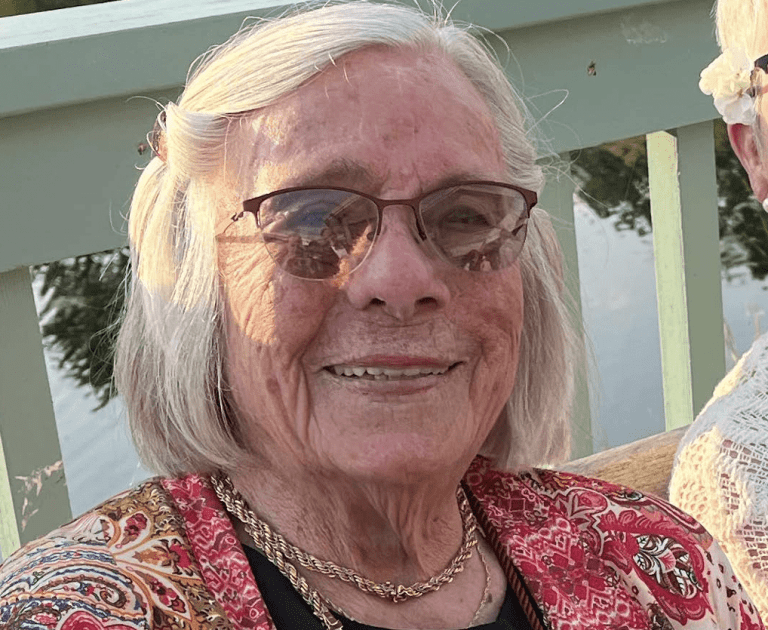
By Anne W. Semmes
The new Bruce Museum’s exhibition of “Mark Dion and Alexis Rockman: Journey to Nature’s Underworld” truly realizes and exemplifies the Bruce as a museum of both art and science. The art on display of these two renowned artists, Dion and Rockman, both entranced by the natural world, illustrate most vividly the impact of scientific discoveries of the day, including climate change, to the degree that might be described by poet Tennyson’s words as “nature, red in tooth and claw.”
Take, for instance Rockman’s vivid “Fever Dream” painting of a tree filled with assorted wildlife that depicts a vision of naturalist Alfred Russel Wallace gripped by yellow fever, with his mind on the theory of natural selection he shared with Charles Darwin; or his “Adelis” painting of tiny penguins perched high atop a chunk of melting ice, or Dion featuring the skeleton of a lost species in his 14-foot long display – “Trichechus manatus latirostris” (West Indian Manatee), presented on a bed of human debris.
These two artists have shared their passions and curiosity for the natural world for over 30 years, having traveled together to tropical settings like Guyana. And they have much in common with the two naturalists and founding curators of the Bruce Museum, Paul Griswold Howes and Edward Bigelow dating from over a century ago.
Their history and the history of the Bruce was finely laid out at a talk last Tuesday evening at the Bruce with Collections Manager Tim Walsh sharing the stage with Dion and Rockman. The talk’s focus was on “Unlocking the Cabinet of Curiosity,” referring to a joint activity of all three to create a “cabinet” in the exhibition filled with chosen historical pieces of the Bruce Museum. Some 53 items were chosen Walsh told of material primarily collected by curator Howes.
“It was an embarrassment of riches to choose from,” shared Rockman. “And we spent a couple of sessions looking with Tim through stuff, and he would explain what the paintings were, the artifacts, the pieces of equipment.” “We were very excited to work with the Museum,” added Dion, “because of this unique relationship between art and natural history, which you don’t find everywhere. The things that really told the story also had a kind of beauty that really lives in that ambiguous space between art and science.”
Dion was drawn to the scrapbooks, and as Howes had also traveled to Guyana with naturalist William Beebe, he was awed “to see photographs of not the same exact sites that we were at, but the same river – to have that overlap was just incredible.” Add those miniature dioramas of Guyana Howes created, Walsh told.
What followed was the two artists describing their modus operandi. “Alexis and I spend a lot of time researching our works,” told Dion. “We read a lot. We meet scientists, we meet people like Tim. We’re deeply engaged in the history of natural history, but also current events.” He added, “For me the most pleasurable part of the process is making right this research.”
“I like to tell stories,” said Rockman, “And I know Mark does as well. And one of the things that Mark and I like to challenge ourselves with is telling difficult stories about the biodiversity crisis and climate change and all these things that we have to face more and more. Today was an example of the world is on fire, literally. And what are we doing about it?”
“One of the things Alexis is painting,” added Dion “is that we make the work that we would like to see that we’re not seeing in the world, things like the diorama [cabinet] we made for this project of this transformed landscape from human activity, “American Landscape.”
“And that’s something humans as a species really need to think about,” interjected Walsh. “And that’s what I love about your art is that you make people think less empirically of how you as an individual are affecting the earth. The cabinet with all of the plastic detritus from the garbage dumps is incredible.”

So, that sculptural diorama offers a present-day scene of a golf course in both day and night, above and below ground level, with taxidermy survivalist species in each. Like an archaeological site it shows all the below ground plastic trash. “You can’t make art about ecology in the 20th or 21st century and not include it,” Rockman has written, “It’s the reality of the state of the planet.”
In the Q&A following the talk was of why a golf course was chosen for their diorama. “When we were asked if there was a collaborative thing that we wanted to do, it was like spontaneous combustion,” Rockman shared. “We both hate golf. [Laughs]. We just think that golf is a disaster for everyone involved and a horrible waste of resources.”
“It is such a poor example of land use,” added Dion. “It needs enormous amounts of chemicals to continue it…But at the same time, when you go on to a golf course there’s lots of animals.”
It was during the artists’ talk that a question addressing “the most serious issue” of climate change was posed to them. “How do you maintain a sense of motivation, hope or optimism when addressing this issue?” “It’s important to act in our own field,” said Dion. “But why isn’t every artist dealing with this? And if they are, they’re not getting the visibility that they should…Alexis and I are at least putting these ideas out there.”
Concluding, both Rockman and Dion were excited to be making their way in two days to Naples, Italy on another collaborative travel project, working with Dana Sherwood, an artist with a similar focus of “exploring the relationship between humans and the natural world in a changing environment.” “We’ll be looking into the rich scientific collections within Naples, going back before even the notion of science itself exists,” noted Dion.








